As our consciousness grows about the effects of our routines on our health and the environment, we’re continually seeking ways to lessen our exposure to chemicals. Hair care is one area where this shift is significantly evident. Recently, an increasing number of individuals are challenging the need for traditional shampoos and conditioners, exploring alternative approaches instead. The ‘water-only’ or ‘water hair wash’ method stands out as a popular choice among these alternatives.
Table of Contents
But, can you wash your hair with just water?
In essence, this method involves using only water to clean your hair, eliminating the need for shampoo and conditioner entirely. Advocates of this method claim that it helps to maintain the natural oils in the hair, leading to healthier and more manageable hair over time. Critics, however, raise concerns about the potential buildup and the lack of deep cleansing compared to traditional shampoos and conditioners.
As with any beauty trend, it’s important to understand the science behind it and to weigh the potential pros and cons before making a decision. This article aims to provide an objective look at the water-only hair-washing method, to help you decide if it’s the right approach for you. We’ll also provide expert insights and practical tips to ensure your hair stays healthy, whether you’re considering making the switch or just curious about the concept.
Continue reading to learn more about the concept of washing your hair with nothing more than water and how it contrasts with conventional shampooing and conditioning.
Water-Only Hair Washing

The water-only hair-washing method, often referred to as a “hair bath,” is a simple yet revolutionary concept. It promotes the idea of using just water to clean your hair and scalp, thus eliminating the potential harm caused by chemicals in traditional hair products.
This method isn’t about a quick rinse under the showerhead. It requires a careful and thorough massaging of the scalp with water, paying particular attention to areas that might have more buildup. The aim is to distribute natural oils, remove dead skin cells, and clean away dirt.
Advocates of the water-only washing method argue that this approach is more in line with the body’s natural rhythm. Hair produces sebum, a natural oil that helps to moisturize and protect it. Traditional shampoos strip this natural oil from the hair, potentially leading to dryness, breakage, and scalp irritation. Over time, the scalp may even produce excess sebum to compensate for the loss, leading to greasier hair.
The idea behind only washing hair with water is to allow the hair to retain its natural oils, which may eventually result in healthier, shinier hair. It’s a straightforward strategy that emphasizes letting nature run its course while yet making sure your hair is clean and well cared for. But not everyone may find success with this approach, and success may rely on a variety of variables. These include your lifestyle choices, your hair type, and how well you handle the change.
Why Is My Hair Stiff
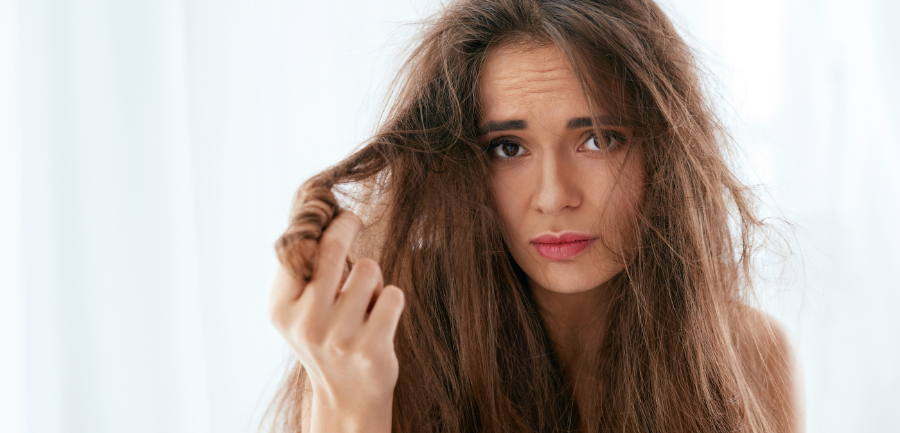
One common concern many people have when trying new hair care routines is the texture of their hair, often expressed in complaints such as, “Why is my hair stiff?” Hair stiffness can be due to several factors, both internal and external.
Internally, the health of your hair is often a reflection of your overall health. If your body lacks certain nutrients, such as vitamins A, C, D, and E, or proteins and omega-3 fatty acids, it can impact the health of your hair. For instance, protein deficiency can make hair dry and brittle, while lack of adequate hydration can also lead to stiff hair.
Externally, factors like the products you use, how you style your hair, and environmental conditions can all contribute to hair stiffness. Overuse of heat styling tools, harsh hair products, and even exposure to sun and wind can damage the hair cuticle, making your hair feel stiff.
When it comes to washing hair with just water, some people might experience stiff hair initially. This could be due to the transition period as your scalp adjusts to producing natural oils without being stripped by shampoos. It could also be because the water isn’t removing all the buildup from your hair, resulting in a residue that makes your hair feel stiff. This is why it’s crucial to thoroughly massage the scalp and rinse the hair when using the water-only method. Over time, as your hair adjusts, it should start to feel softer.
Shampoo Before Conditioner

The saying “shampoo before conditioner” is virtually universally acknowledged in the standard hair care regimen. It’s critical to comprehend the benefits of this order and how it differs from the water-only approach.
The primary purpose of shampooing your hair is to cleanse your scalp and hair, eliminating grime, perspiration, surplus oil, and accumulation of hair products. Shampoos include detergents that work by adhering to the oil and dirt present in your hair and scalp, enabling their removal through rinsing with water.
Following shampoo with a conditioner is a step aimed at restoring moisture and softness to your hair. Conditioners work by smoothing down the hair cuticle, which can become roughened during the shampooing process. This makes your hair feel soft, reduces frizz, and adds shine.
While this method can effectively clean your hair and leave it feeling soft and manageable, it’s not without its drawbacks. Some shampoos can be too harsh, stripping your hair and scalp of their natural oils, leading to dry, damaged hair over time. Similarly, some conditioners may leave residue on the hair that weighs it down, making it look dull and lifeless.
By conserving the hair’s natural oils and minimizing product accumulation, the water-only approach seeks to address these problems. However, depending on a person’s hair type and lifestyle, this method’s efficacy can vary substantially.
How Much Shampoo Should You Use?
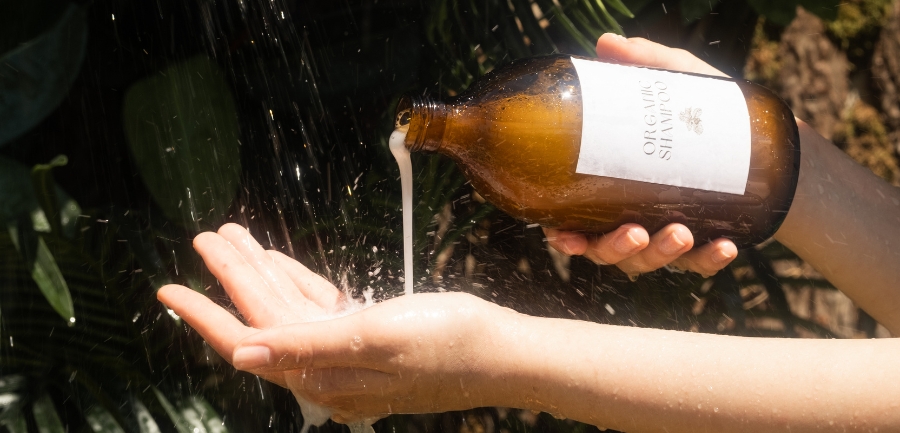
Another query can come up if you opt to remain with the conventional shampoo and conditioner method: “How much shampoo should I use?” Your hair type, length, and quantity of product accumulation in your hair are all variables that may affect the answer.
As a general rule, a quarter-sized amount of shampoo is sufficient for most people with medium-length hair. If your hair is very long or thick, you may need to use more, while those with shorter or thinner hair may need less. The key is to make sure your hair and scalp are thoroughly clean, but without overdoing it and stripping your hair of its natural oils.
Should your hair have substantial product buildup, it might necessitate a larger amount of shampoo or potentially a repeat wash. However, caution is advised not to shampoo overly frequently or use excessive product, as this can lead to drying of your hair and scalp.
Remember, the goal is to maintain a balance where your hair is clean but not stripped of its natural oils. Whether you’re washing your hair with just water, using shampoo and conditioner, or experimenting with other natural hair care methods, it’s about finding what works best for you and your hair’s unique needs.
How Long Should You Leave Shampoo in Your Hair?
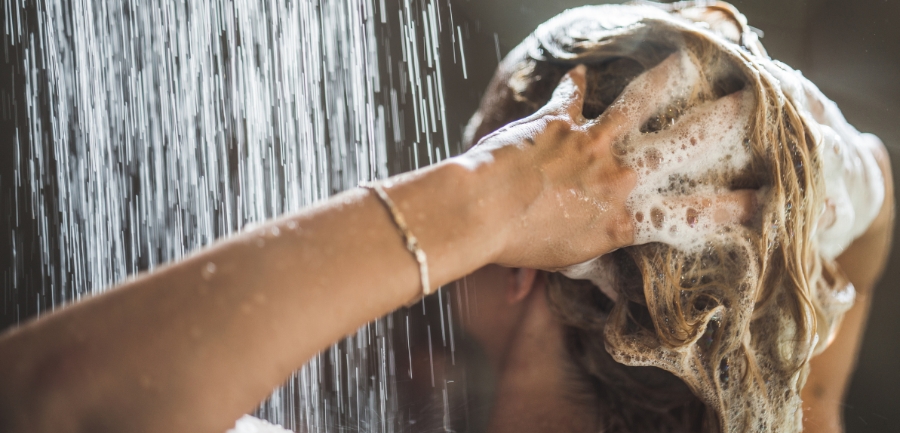
Another crucial aspect to consider in your hair care routine is timing, specifically, how long should you leave shampoo in your hair? Much like the amount of shampoo you use, the answer to this question depends on several factors such as your hair type and the specific needs of your hair and scalp.
Typically, it’s recommended to massage shampoo into your hair and scalp for around 1-2 minutes, focusing on the scalp where oil and dirt tend to accumulate. This ensures that the shampoo has sufficient time to bind with the oil and dirt, allowing them to be washed away. After this, you should thoroughly rinse your hair to ensure no shampoo residue is left behind, as this can cause buildup and make your hair look dull.
However, if you’re using a medicated shampoo to treat specific scalp conditions, you might need to leave it on for longer. Always follow the instructions on the product or the advice of your healthcare provider in these instances.
When transitioning to washing hair with just water, remember that thorough rinsing and massaging are still crucial. You’re not using shampoo to help lift away oil and dirt, so the mechanical action of your fingers becomes even more important to keep your hair clean and healthy.
Are You Supposed to Condition Your Scalp?

The use of conditioner often sparks discussion: should you condition your scalp? While there isn’t a universally applicable answer, there are some basic guidelines that can offer guidance.
The main purposes of the conditioner are to nourish and smooth your hair, aid in detangling it, and make it shinier and easier to handle. Since your hair tends to be drier and more prone to damage at the ends, it is typically advised to apply conditioner there first. When conditioner is applied to the scalp, it may cause buildup and make your roots appear greasy.
Applying conditioner to your scalp may also be helpful if you have an extremely dry or flaky scalp. Specific compounds in some conditioners can help hydrate and calm the scalp. If you choose to condition your scalp, be sure to thoroughly rinse to remove any remaining product.
The concept of conditioning doesn’t apply in the conventional sense while employing the water-only hair wash method because you’re not using a separate product. However, you can accomplish a comparable result by making sure that your hair’s lengths are evenly coated with the natural oils produced by your scalp, which can keep it moisturized and manageable.
Shampoo Residue in Hair
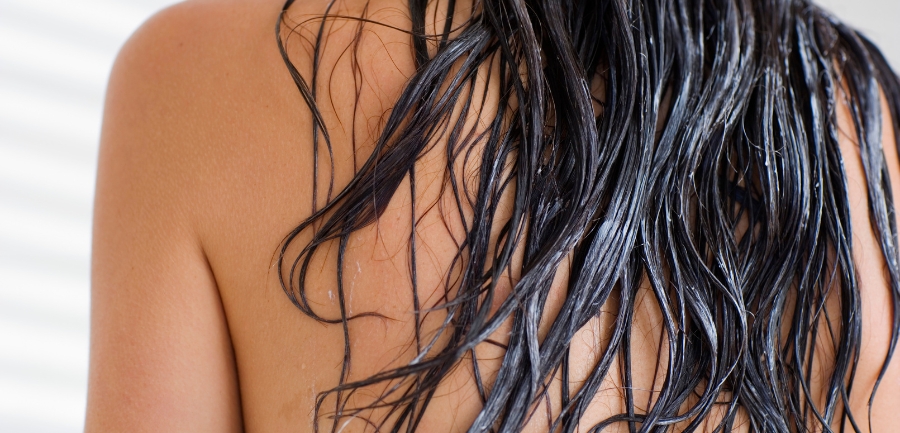
Whether you follow a traditional shampoo-and-conditioner routine or are exploring alternative hair care methods, one common concern is shampoo residue in your hair. This can occur when shampoo is not completely rinsed out of your hair, leaving behind a layer that can weigh your hair down, make it look dull, and even cause scalp irritation.
For people with longer or thicker hair, shampoo residue can be especially troublesome because it might be more challenging to completely rinse out the shampoo due to the sheer volume of the hair. To ensure that all of the product is removed from your hair after shampooing and conditioning, take the time to properly rinse your hair.
Overuse of shampoo can also exacerbate the issue of residue. Bear in mind, a modest quantity of shampoo is typically enough to cleanse your hair and scalp adequately.
Consider using a clarifying shampoo or a natural rinse, such as apple cider vinegar, once or twice a week if you have trouble with stubborn shampoo residue. Your hair will seem lustrous and healthy as a result of the buildup being removed.
For those considering or practicing the water-only method, the issue of shampoo residue is eliminated. However, the potential for natural oil buildup still exists and requires a thorough water rinse and scalp massage to ensure clean, healthy hair.
How to Shower Without Washing Hair
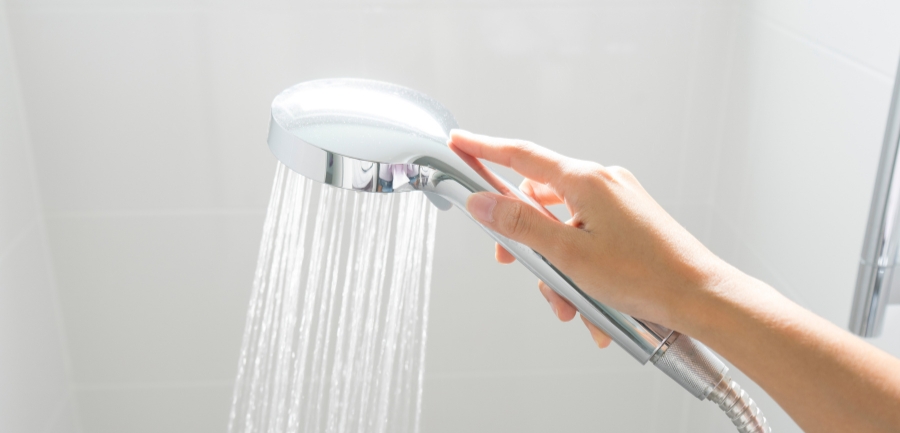
There are days when you might want to shower without washing your hair, whether to preserve a hairstyle, prevent over-washing, or simply save time. Here are some tips on how to do just that effectively:
- Use a shower cap: The use of a shower cap is the easiest fix. This physically separates your hair from the water. It’s a particularly helpful tool for people who wish to maintain their long hair or their styled hair.
- Tie it up: If you don’t have a shower cap handy, tying your hair up in a bun or a high ponytail can keep most of it out of the water. However, this may not be as effective if you have shorter hair or layers.
- Mind your showerhead: If you have a handheld showerhead, you have better control over where the water goes, making it easier to avoid your hair.
- Wear a towel or bandana: Wrapping your hair in a towel or wearing a bandana can provide additional protection.
Remember, whether you wash your hair with just water or use shampoo and conditioner, giving your hair a break from washing now and then is a good idea. It can prevent dryness and damage caused by over-washing, and let your hair’s natural oils do their work.
FAQs
How do you know if you washed your hair properly?
You’ve washed your hair properly if it feels clean and light, without any greasy or heavy feeling from leftover product or oil. Your scalp should feel refreshed, not itchy or irritated.
How many times a week should you wash your hair?
The frequency of hair washing is subjective and depends on your hair type, lifestyle, and personal preference. Generally, 2-3 times a week is often recommended to maintain healthy hair and scalp.
How when should I wash my hair?
Wash your hair when it feels greasy, dirty, or itchy. Use lukewarm water and gentle massaging motions on the scalp, paying attention to rinse thoroughly to avoid residue or buildup.
How long do you leave the shampoo in your hair?
Usually, massaging shampoo into your scalp for 1-2 minutes is sufficient. This allows it to bind with oil and dirt for effective cleansing. Always rinse thoroughly afterward.
To Wrap It Up!
Navigating through the world of hair care can be a complex journey, with countless products and methods available. Washing hair with just water, or the water-only method, is one such method that has captured the attention of those seeking a more natural and minimalist approach to hair care. While this method may work for some, it’s important to remember that everyone’s hair is unique, and what works for one person might not work for another. From understanding why your hair might feel stiff to determining the appropriate amount of shampoo to use or how long to leave it in your hair, we’ve delved into a variety of topics to help guide you on your hair care journey. The key is finding what works best for your specific needs and hair type. Whether you’re a traditional shampoo-and-conditioner enthusiast or a water-only method advocate, remember that the ultimate goal is healthy, happy hair.

